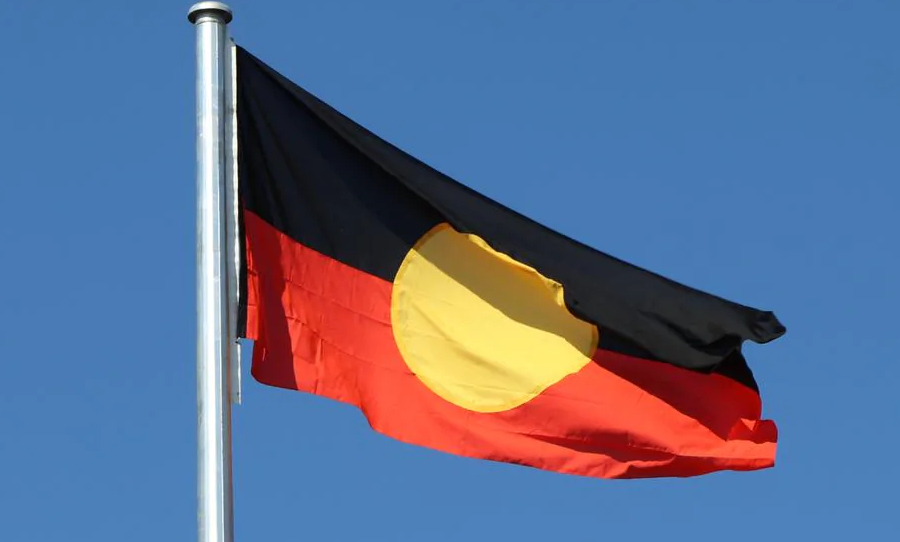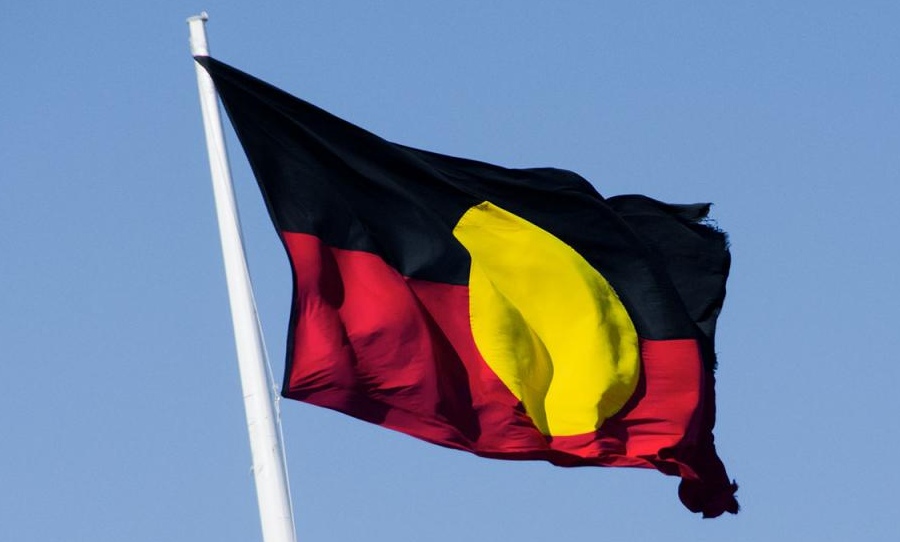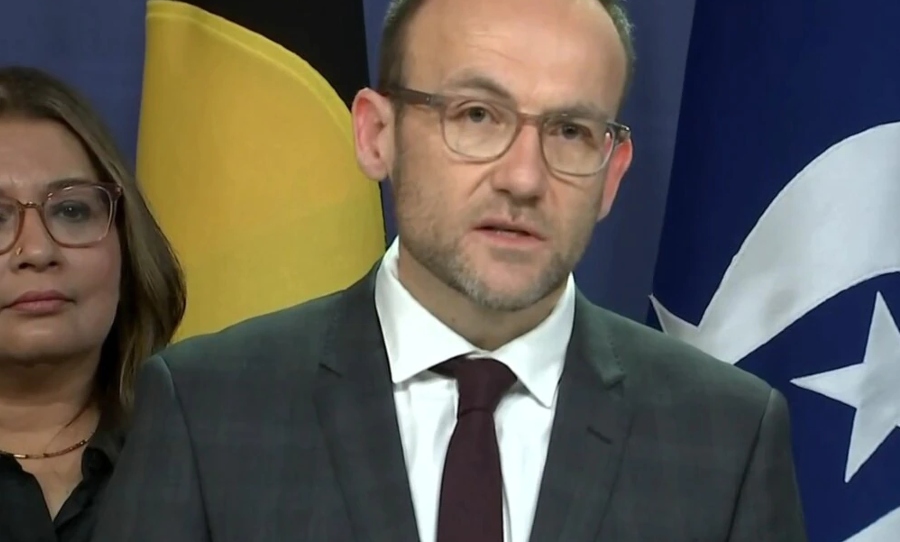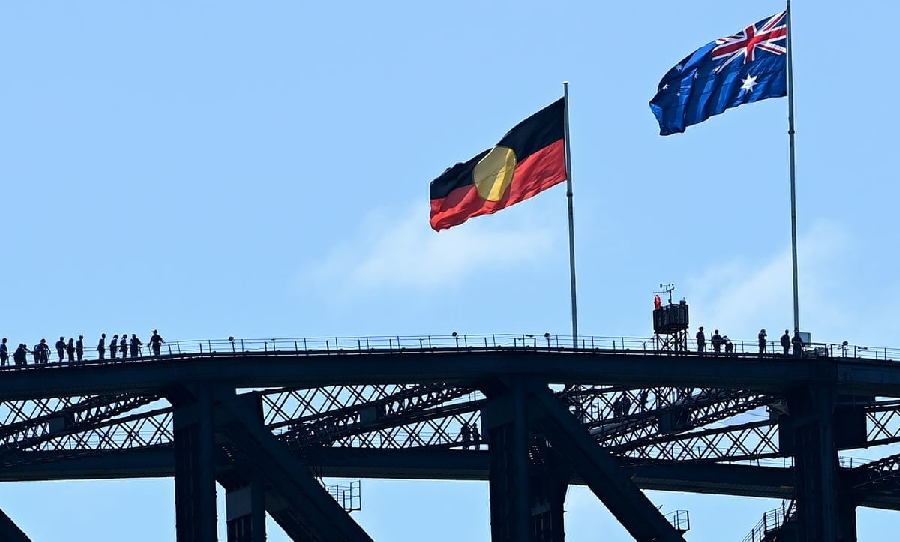Over the weekend, the AFL was called out for choosing not to display the Aboriginal flag amid copyright controversy, drawing attention to the larger issue at hand.
On Friday the 21st of August, the AFL hosted their Sir Doug Nicholls Indigenous Round at TIO Stadium. The annual round named after Sir Doug Nicholl, who is the only AFL player to be knighted and serve as a state governor, is used to recognise and celebrate Aboriginal and Indigenous players and their culture.
However, at this year’s round, there was one major concern surrounding the event that was unrelated to the game itself – copyright laws. This year, the AFL opted to not display the Aboriginal flag at the round – and the game has received quite a lot of backlash as a result. To properly comprehend the general outrage from this decision, we need to understand the history of this flag.

The Aboriginal flag was created by Luritja man, Harold Thomas, and was first raised on the 12th of July 1971, National Indigenous Day, at Victoria Square, Adelaide.
On the 14th of July 1995, the Governor-General made changes to Commonwealth law recognising the flag as being of“the Aboriginal peoples of Australia and a flag of significance to the Australian nation generally, and appointing the flag under section 5 of the Flags Act 1953 as the flag of the Aboriginal peoples of Australia and to be known as the Australian Aboriginal Flag.”
Yet despite officially recognising it as the Australian Aboriginal flag, these changes did not enable the same usage as the national flag.
When it comes to the Australian flag, as long as you abide by the guidelines of respecting use, there is no need to gain permission. However, this is not the case with the Aboriginal flag. As the owner and creator of the flag, Thomas is able to grant licences to other parties to make copies of the flag or refuse its use altogether.
After Thomas successfully established his authorship before the Federal Court in 1977, he granted a license to a company called Flags 2000, and in 2018, he granted an exclusive worldwide copyright licence to WAM Clothing PTY LTD. This allowed the non-Indigenous company to control the use of the Aboriginal flag on clothing worldwide, and every time the flag is licensed from WAM, Thomas is paid royalties.
I’m shocked the Aboriginal flag is not free to use by our Indigenous community or for events celebrating Indigenous heritage. How on earth can a business own a national flag?This really needs to be resolved immediately.💡#freetheflag #indigenous #australia https://t.co/EE817eHzjC
— Yasmin Sethi (@yasmin4change) August 20, 2020
Ben Wooster, one of the owners of WAM, is also the director of a company called Birubi Art. In 2018, the Australian Competition and Consumer Commission brought legal proceedings against Birubi for unethically selling over 18,000 boomerangs and other souvenir products which featured visual images associated with Aboriginal artists and words such as ‘Aboriginal art’ and ‘genuine’, despite the fact that the products were in fact made in Indonesia.
The Australian Parliament’s Standing Committee on Indigenous Affairs released a report in 2017 titled, The growing presecence of inauthentic Aboriginal and Torres Strait Islander ‘style’ art and craft products and merchandise for sale across Australia, which aims to identify the harm caused to Indigenous peoples and communities whose stories, histories, and culture these items depict and appropriate.
1) WAM who holds the Aboriginal flag rights is part-owned by Ben Wooster. His former company Birubi Art Pty Ltd was prosecuted for selling and profiting of fake Aboriginal art and was fined $2.3m. pic.twitter.com/99gHeOMGzr
— Nova Peris OAM OLY (@NovaPeris) August 17, 2020
Although the flag design is private property, it has become an internationally recognised icon of Aboriginal and Indigenous culture. The former head of the Australian Copyright Council, Fiona Philips, has said the Federal Government could buy back the copyright license from Thomas and pay him fair compensation as required by the constitution. However, there would be pros and cons to this.
Asking the government to intervene could be seen as another appropriation of Aboriginal property rights; in this case, the Indigenous designer, Thomas, being forced to forfeit ownership of his work.
Yet, at the same time, it seems only right that those seeking to use the flag as an expression of their cultural identity, solidarity or sympathy – or for charitable causes – should not have to pay; in the same way that those who use the Australian flag in such a way are not required to pay.
So we won’t see the Aboriginal flag during the Indiginous round of @AFL. What the hell is going on in this world of ours? Surely our flags need to be free to use, share, wave and be proud of.
What a disaster.— Ryan de Munk (@rysie8) August 19, 2020
Last week, Gamilaroi Gomeroi woman (and the first Indigenous person on an Australian commercial breakfast program), Brooke Boney, passionately spoke about her disappointment around the flag ban on the Today show, describing: “This is a flag that is a symbol of our pride, of our culture, of our struggle, of everything that it means to be Aboriginal and these guys are making money from it.”
Colleagues Karl Stefanovic, Ally Langdon, and Alex Cullen agreed that the flag should not be monetised, with Langdon adding that this was an opportunity for the non-indigenous businesses that hold these licences to “turn around and do the right thing.”
https://www.instagram.com/p/CEIaZ7XHD3s/?utm_source=ig_embed&utm_campaign=loading
In 2019, the Free the Flag campaign was launched by Clothing the Gap, a social enterprise of Spark Health. This campaign aims to support the idea that the Aboriginal flag should be “celebrated, shared and worn” for pride, not profit.
The campaign is currently lobbying the government to take action, and as of August 2020, every single AFL club has signed on to support the cause. Managing Director of Spark Health and Gunditjmara woman, Laura Thompson, told 9 News, “The Australian flag doesn’t represent us and we have this other symbol that we felt did.”
Currently, the #PridenotProfit petition has over 130,000 signatures, and you can help support this campaign, and help free the Aboriginal flag once and for all, by signing the petition.



